Views: 0 Author: Site Editor Publish Time: 2025-09-20 Origin: Site








What is an ABS Spoiler? Why Choose an ABS Spoiler? Comparative Analysis What Are the Disadvantages of ABS Rear Spoilers? How to Fix ABS Car Spoilers? How ABS Spoilers Are Manufactured? How to Painted ABS Spoiler? How to Install ABS Spoilers? How to Maintain and Care for ABS Spoilers? Where to Buy ABS Car Spoilers? Conclusion
This expert guide provides an in-depth introduction to ABS plastic car rear spoilers. It covers their characteristics, advantages and disadvantages, comparisons with other spoiler materials, installation methods, repair and refurbishment techniques, and long-term maintenance tips. Whether you're an automotive enthusiast, a repair shop, or a wholesaler, this article will help you understand why ABS spoilers are one of the most popular choices in the global automotive aftermarket.
An ABS spoiler is an automotive aerodynamic component manufactured from Acrylonitrile Butadiene Styrene (ABS), a widely used thermoplastic polymer.
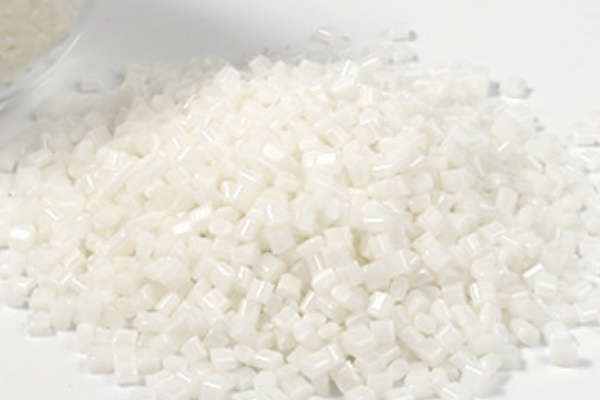
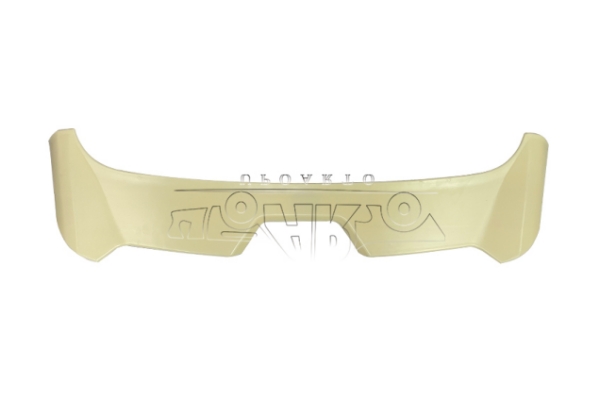
『Key Characteristics of ABS』
Impact Resistance: ABS exhibits high toughness and energy absorption capacity, allowing it to resist chipping and fracture when subjected to road debris, minor collisions, or handling stresses during installation.
Rigidity and Structural Integrity: Compared with elastomeric materials such as polyurethane, ABS maintains dimensional stability under aerodynamic load. This rigidity ensures that spoilers retain their intended aerodynamic profile even at sustained highway speeds.
Formability and Manufacturing Efficiency: ABS has excellent thermoplastic flow properties, making it highly compatible with injection molding and vacuum forming. These processes enable precise replication of complex geometries, uniform wall thickness, and consistent surface finishes.
Because of these characteristics, ABS is widely adopted in automotive exterior components—not only spoilers, but also mirror housings, grilles, and interior trim panels. Compared with hand-laid fiberglass or carbon fiber composites, ABS offers superior scalability in high-volume manufacturing, making it particularly well suited for OEM-style or aftermarket spoilers where cost-efficiency and consistency are critical.
Selecting the right spoiler material is a balance of budget, intended use, and desired aesthetics. Here's how ABS compares to other common materials:
vs. Polyurethane (PU): Polyurethane is a more flexible material, making it highly resistant to minor impacts and flexing without cracking—a common choice for OEM parts. However, this flexibility can make it less rigid during high-speed driving. ABS is stiffer and holds its shape better under aerodynamic load, but is more prone to cracking (rather than bending) upon impact. ABS also typically holds paint and finish better than flexible PU.
vs. Fiberglass: Fiberglass is a strong, rigid, and highly customizable material, often used for custom body kits. It can be repaired easily but is notoriously brittle. It can shatter or crack upon impact. ABS is generally more durable against everyday road debris and minor impacts. Fiberglass parts are also heavier and often more expensive due to their labor-intensive manufacturing process.
vs. Carbon Fiber: Carbon fiber is the premium option, offering an exceptional strength-to-weight ratio and a distinctive high-end appearance. Its performance benefits are most apparent in competitive motorsport. However, it is the most expensive option and can be susceptible to UV yellowing if not properly coated. ABS provides a fraction of the cost for a similar visual effect when painted, albeit at a significantly higher weight and without the structural benefits of carbon.
| Comparative Properties of Spoiler Materials | ||||
| Property / Material | ABS (Acrylonitrile Butadiene Styrene) | Polyurethane (PU) | Fiberglass (FRP) | Carbon Fiber (CFRP) |
| Density (g/cm³) | ~1.04 – 1.06 | ~1.10 – 1.25 | ~1.80 – 1.90 | ~1.60 – 1.70 |
| Flexural Strength | Moderate (70–90 MPa) | Low to Moderate | High (~150–200 MPa) | Very High (>500 MPa) |
| Impact Resistance | High (good everyday durability) | Very High (flexible) | Low (brittle, cracks) | Moderate (can delaminate) |
| UV Resistance | Moderate (requires coating) | High (with additives) | Low (prone to chalking) | Moderate (needs clear coat) |
| Surface Finish | Smooth, paint-ready | Flexible, harder to paint | Requires gel coat | Premium weave finish |
| Manufacturing Scalability | Excellent (injection/vacuum molding) | Good (injection molding) | Poor (manual labor) | Poor (labor-intensive) |
| Relative Cost | Low | Medium | Medium–High | Very High |
While ABS has many strengths, ABS also comes with limitations:
Cracking: Cracking can occur at stress points (mounting holes, sharp edges) if impacted or overtightened.
UV degradation: Because the surface of the ABS spoiler needs to be painted, if the paint is not applied properly, long-term exposure to sunlight will cause fading, brittleness or whitening.
Warping: Under extreme high temperature conditions, the shape of the ABS spoiler will be deformed.
Peeling paint: If the primer is not applied properly, aftermarket paint may not adhere well.
Scratches: If the finished ABS plastic spoiler is not well protected during transportation, scratches will easily appear on it.
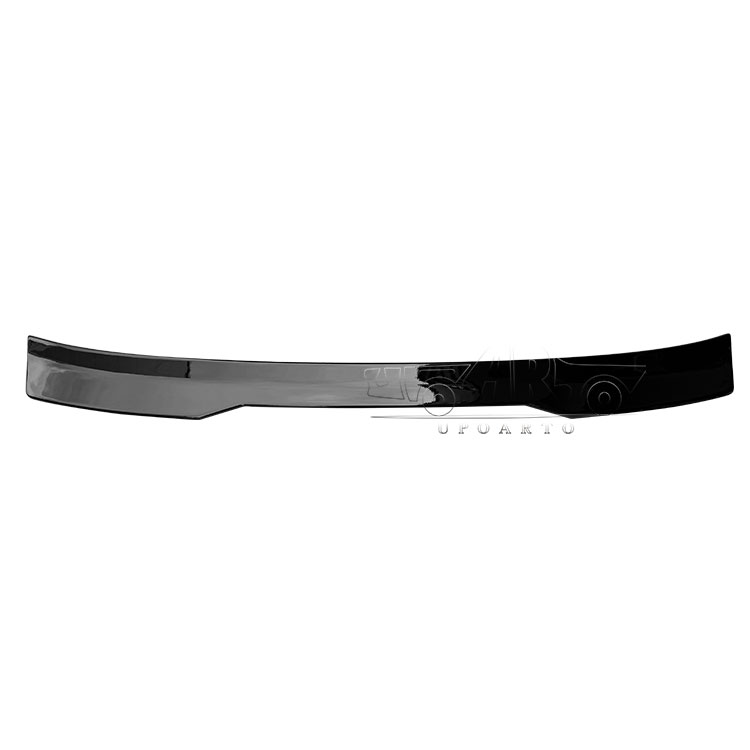 | 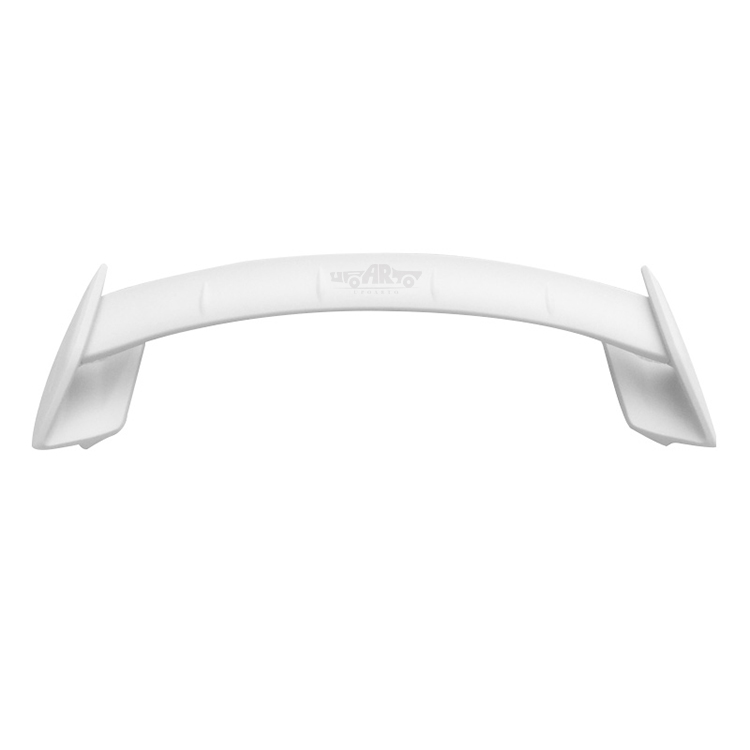 | 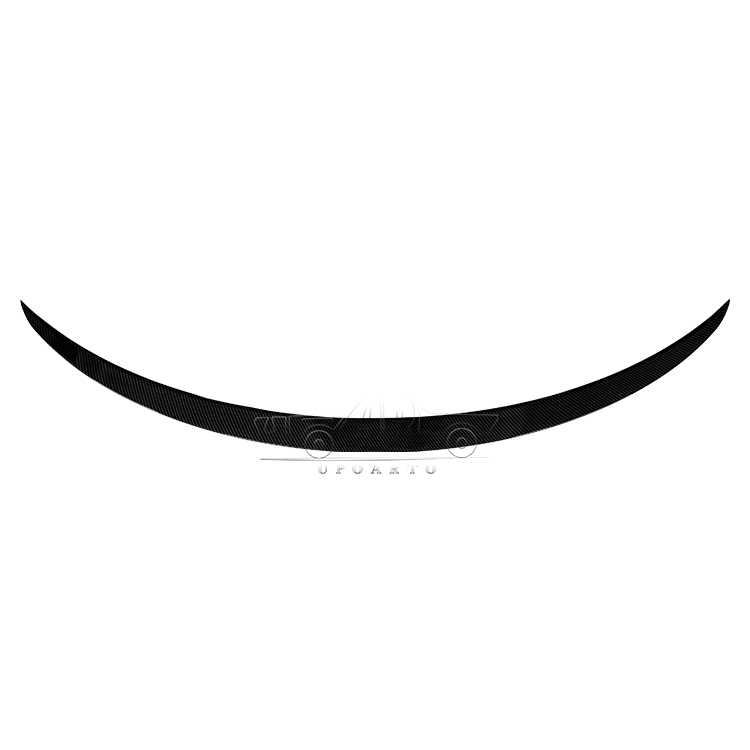 |
| Glossy Black ABS Car Spoiler | White ABS Car Spoiler | Carbon Looks ABS Car Spoiler |
While ABS spoilers can be repaired in some cases, the cost and effort of repair are often not worthwhile compared to replacement. Here's a realistic breakdown:
√ Minor Issues (Worth Fixing):
Small scratches or faded paint → can be polished, repainted, or coated.
Light surface haze on the clear coat → usually restored with polishing or waxing.
× Major Issues (Better to Replace):
Cracks at mounting points or across the spoiler body.
Warped or deformed spoilers caused by prolonged heat.
Severe peeling paint that requires full stripping and refinishing.
In these cases, the repair costs—both in materials and labor—often exceed the price of a brand-new ABS spoiler.
Professional Tip: For distributors and retailers, it's usually more profitable (and convenient for customers) to recommend a direct replacement instead of repair. A new spoiler ensures proper fitment, fresh surface quality, and saves time.
There are two main processes currently used for mass production of ABS spoilers: injection molding and blow molding. Different manufacturing methods are suitable for different types of spoilers.
⑴ Injection-Molded ABS Spoilers – Precision & OEM-Like Quality
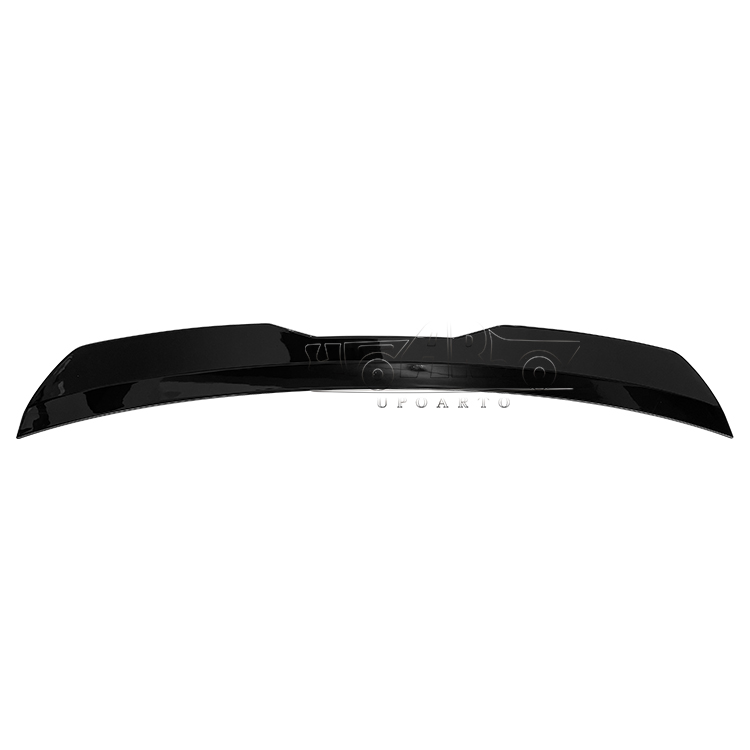
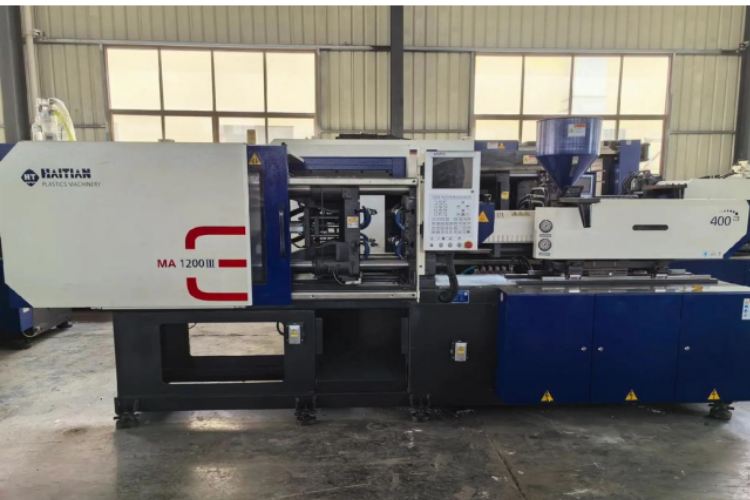
Injection molding is the go-to process for spoilers that require high detail, solid structure, and consistent quality.
■ Why It Works for Clients:
Perfect for lip spoilers, ducktail spoilers, and sporty wings.
Delivers OEM-grade fitment and smooth surface finish, making painting or carbon-look wrapping easy.
Best choice for customers who demand high-volume production with stable quality.
In short: If your market values precision, style variety, and OEM-like quality, injection-molded spoilers are the right solution.
⑵ Blow-Molded ABS Spoilers – Lightweight & Cost-Effective
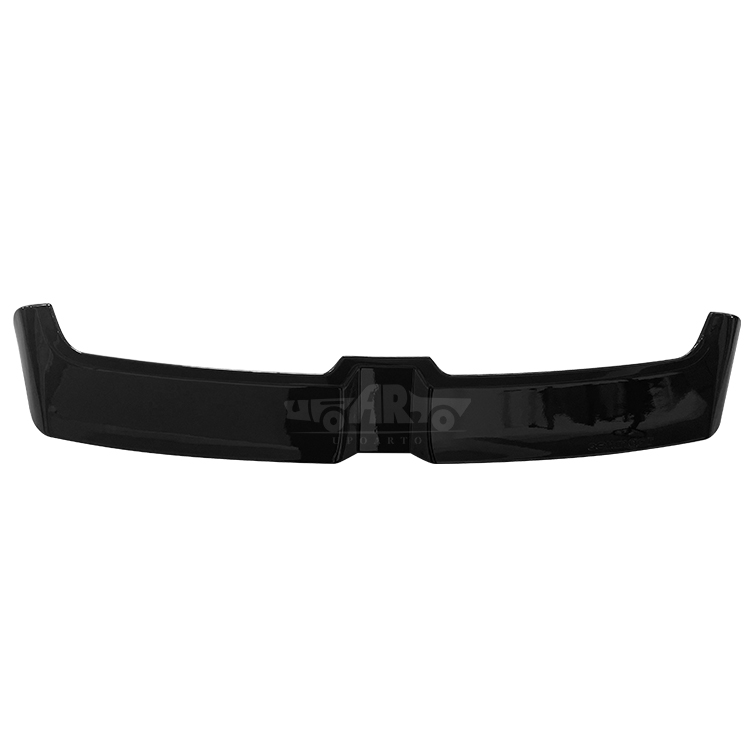
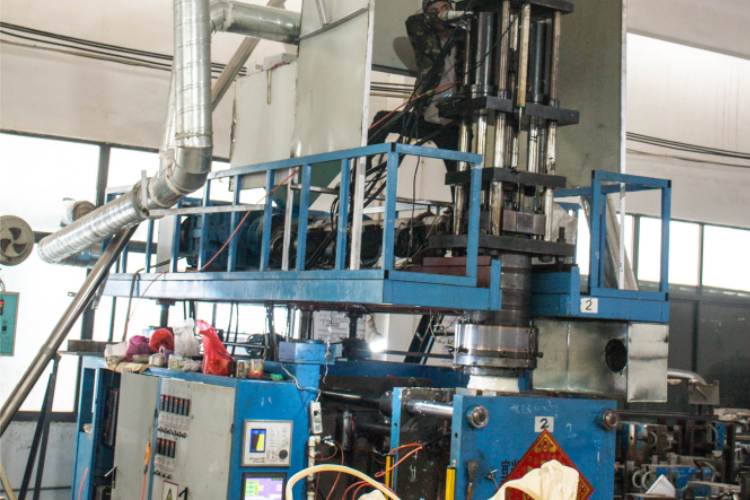
Blow molding is widely used for hollow spoilers and larger designs where weight reduction matters.
■ Why It Works for Clients:
Ideal for roof spoilers, SUV tailgate spoilers, and larger aftermarket designs.
Hollow construction means lighter weight and reduced material cost.
A competitive solution for markets that prefer budget-friendly yet stylish upgrades.
In short: If your market demands lightweight spoilers at an attractive price point, blow-molded spoilers are the perfect choice.
One of the biggest advantages of ABS spoilers is that they offer an excellent surface for painting. Unlike some flexible plastics that reject paint, ABS provides good adhesion and a smooth finish when prepared properly.
⑴ Surface Preparation
Clean the spoiler thoroughly with soap and water to remove dirt, grease, and mold-release agents.
Sand the surface lightly (start with 400–600 grit sandpaper) to create a smooth and slightly rough texture for better paint adhesion.
Wipe down with a plastic-safe wax and grease remover.
⑵ Adhesion Promotion
Apply a plastic adhesion promoter. This is critical because it helps the primer and paint bond to ABS plastic.
⑶ Priming
Use a flexible primer designed for plastics.
Apply in thin, even coats to avoid drips. Let each coat dry before applying the next.
⑷ Painting
Spray with automotive-grade color-matched paint.
Apply 2–3 coats for even coverage, allowing drying time between coats.
⑸ Clear Coat & Protection
Finish with a UV-resistant clear coat to protect against sun damage and fading.
Allow the paint to cure fully before installation.
The process of installing an ABS spoiler can be simple or complicated, as spoilers come in varying levels of complexity.
DIY (Do-It-Yourself):
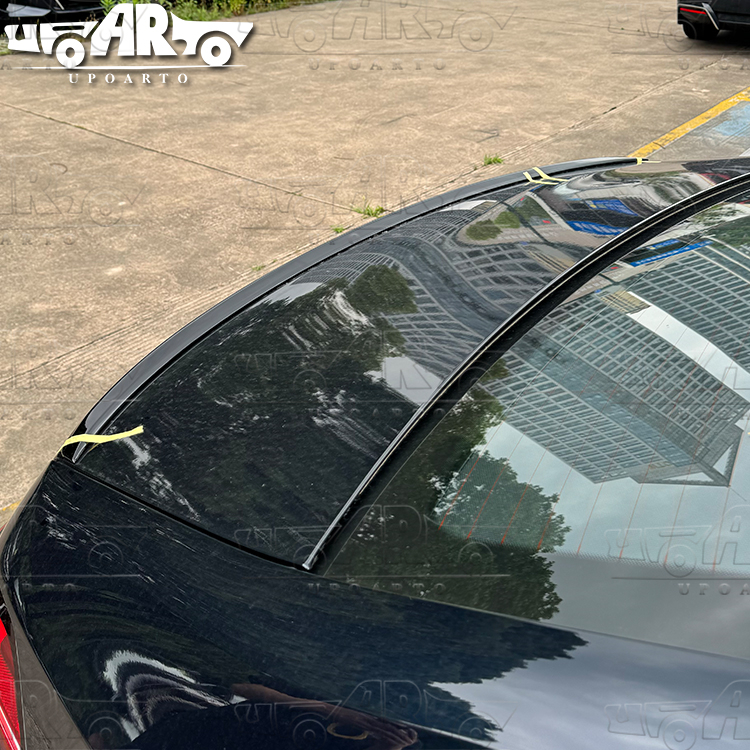
Suitable for smaller, tape-mounted spoilers.
More affordable and convenient but requires patience and careful alignment.
Professional Installation:
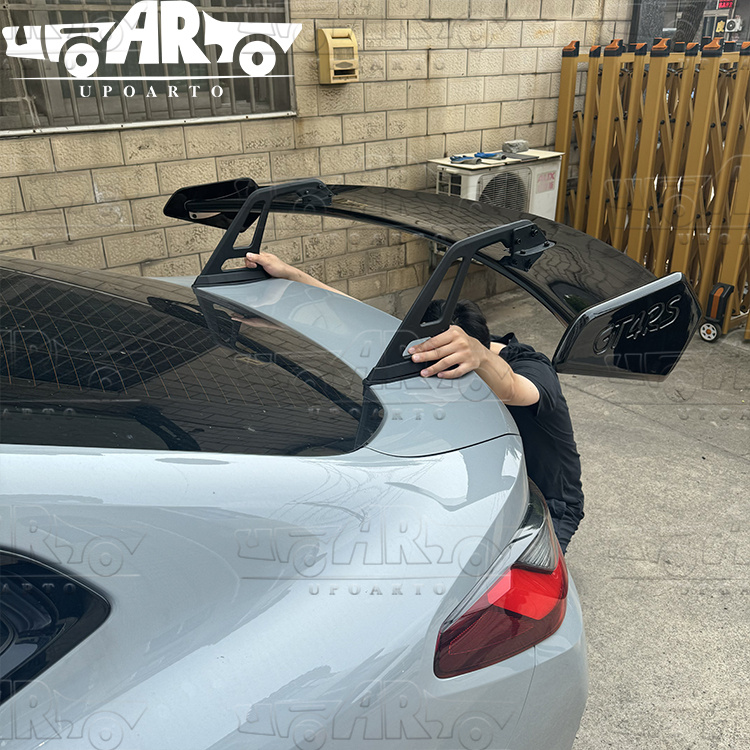
Recommended for bolt-on spoilers or painted spoilers.
Ensures precise fitment, protection against paint damage, and warranty coverage in some cases.
To maximize the lifespan and aesthetics of ABS back spoiler, you can take the following suggestions:
⑴ Cleaning: Use pH-neutral shampoo + microfiber mitt. Avoid abrasive brushes.
⑵ Protection: Apply ceramic coating, sealant, or spray wax for UV resistance.
⑶ Inspection: Regularly check mounting points for cracks.
⑷ Avoid Stress: Do not overload the trunk or lean heavily on the spoiler.
You can purchase ABS plastic car spoilers from a variety of sources, including online retailers, auction sites, aftermarket parts stores, and local custom shops. The best choice depends on whether you prefer shopping in-store or online, and whether you need an exact fit or a universal design.
ABS wing spoilers represent a high-value choice for car modification:
▲ Affordable production cost.
▲ Lightweight yet durable for daily use.
▲ Easy to paint and match with the vehicle.
While not as premium as carbon fiber or as flexible as polyurethane, their combination of performance, finish, and affordability makes ABS spoilers the most popular solution in the aftermarket.
For wholesalers and distributors, ABS spoilers also provide higher margins and stable demand, making them an excellent product line to carry.
